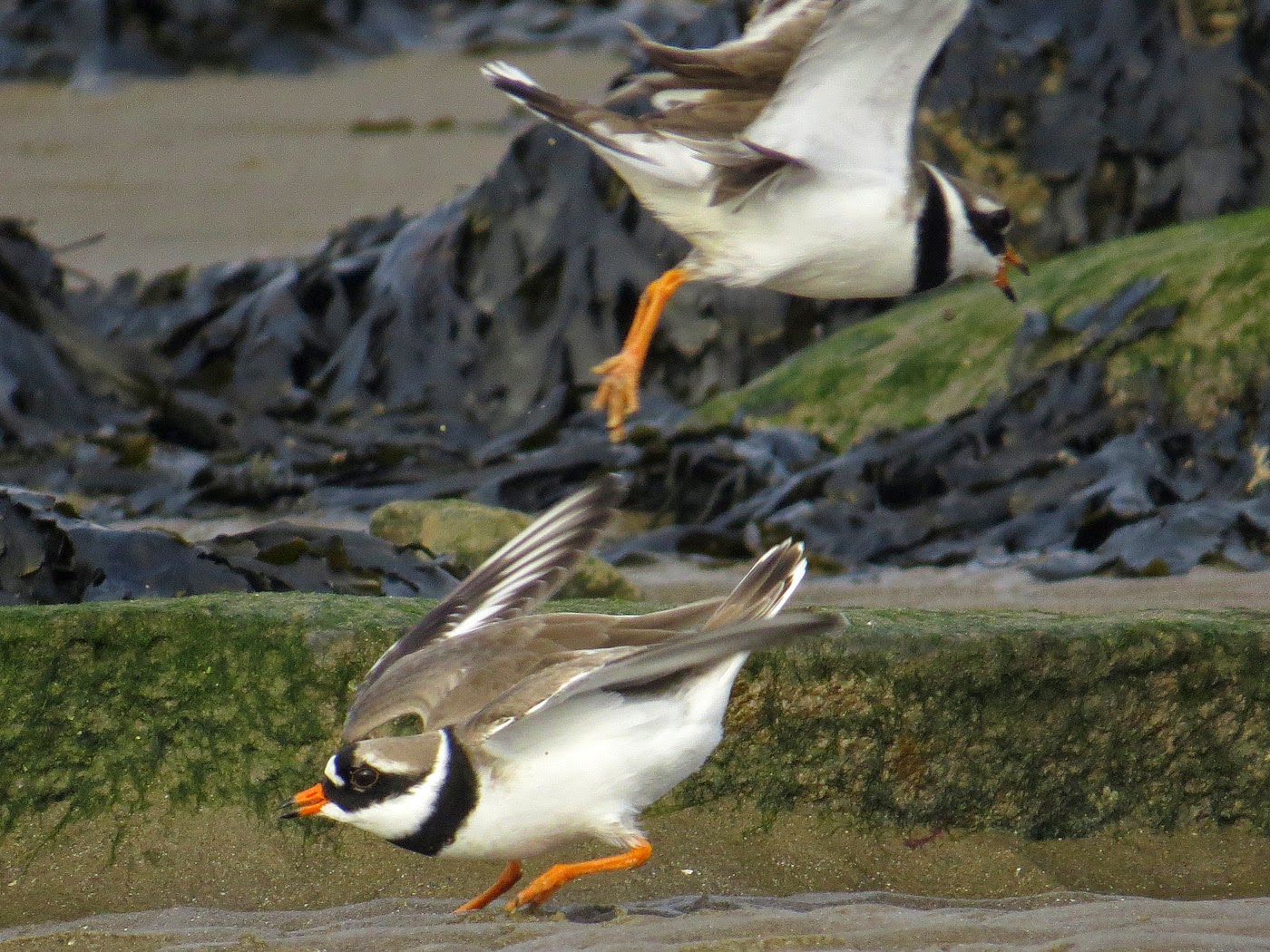At the western end of Herne Bay is the pier of the former hamlet/village of Hampton which was washed away. From the BBC Domesday reloaded website:-
"In 1866 the Hampton Oyster Company was opened by the Mayor of London. This was to rival the Whitstable Companies. A pier was built so that boats connected with the
trade could load and unload. The
Company was quite profitable for about
15 years but then the operations were
moved to Faversham. It is thought that
the building of the pier caused
erosion of the land on its westward
side and 30 acres containing the old
buildings were worn away."
I visited there on Friday 6th Feb, mainly to see if I could photograph the Purple sandpipers that have been seen there, also a Mediterranean gull. It was bitterly cold with a strong N or NE wind blowing, but it was also bright and sunny. The cold wind was an advantage to me as there were relatively few people out and about. This proved very a very productive trip but as always, I thought I could do better so I returned on Monday 9th.
I don't expect miracles with weather forecasting but some semblance of accuracy would be good. On Sunday evening I checked the forecast on the BBC website for Monday- thick cloud all day. The radio forecast on Monday morning said that there would be some sunny intervals but the website still showed unbroken cloud throughout the day, I'd resigned myself to staying in. By about 10:30 there were gaps in the clouds and intermittent spells of sunshine. I decided to go out and a return to Hampton beckoned. High tide wasn't until 15:30 ish so I stopped at Reculver to see what was around. A walk westward from the towers along the beach produced large numbers of Brent geese a few Grey plover and quite a few Ringed plover.
The Grey and Ringed plovers were as unapproachable as ever and the geese - several hundred - flew off long before I got anywhere near them. I found a suitable seaweed covered rock and sat down, camera poised and waited for the tide to do its work. I sat on the rock for over half an hour watching the Ringed plover move ever closer as the tide slowly pushed them up the shore. They were obviously aware of me but were far less skittish moving closer to me than they were with me moving closer to them. They often ignored me and I watched with interest as they started displaying to each other. As I was mainly watching through the camera, so I couldn't easily see the whole scene but the birds, presumably males, would crouch low, chest and head down, wings up but not out and tail fanned to the max, peeping and piping loudly. Every now and again the display would end in a flurry of wings and what appeared to be a brief squabble. I was never sure if the display was courtship not always well received or an act of aggression towards another rival.
The shots above show a typical scenario, I don't know if it is possible to sex the Ringed plover from plumage but I'm assuming these are males, if anyone knows, please get in touch.







No comments:
Post a Comment